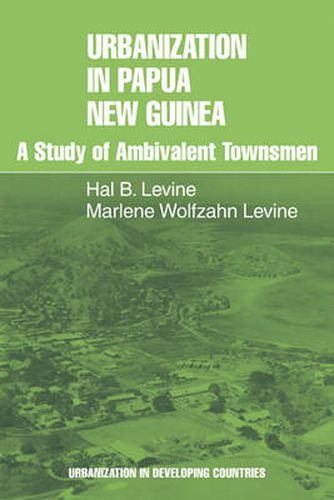Readings Newsletter
Become a Readings Member to make your shopping experience even easier.
Sign in or sign up for free!
You’re not far away from qualifying for FREE standard shipping within Australia
You’ve qualified for FREE standard shipping within Australia
The cart is loading…






Originally published in 1979 as part of the Urbanization in Developing Countries series, this book is a detailed account of the process of urbanization, and provides a unique perspective on the creation by Papua New Guineans of their own distinctively Melanesian urban centres. The authors synthesized a wide range of material drawn from their own research and that of many scholars. They concentrate their analysis on the subtle modification of rural idioms in the urban social field, the formation and role of urban ethnic units, reactions to emerging class differences within the indigenous population, and the development of patterns of relationships and lifestyles in response to urban employment and residence in ‘squatters’ settlements, housing estates and barracks. They describe the historical, spatial and demographic development of the towns, and also discuss problematical aspects of indigenous participation in voluntary organizations, business, and urban government. Finally the authors compare Papua New Guinea to other parts of the world.
$9.00 standard shipping within Australia
FREE standard shipping within Australia for orders over $100.00
Express & International shipping calculated at checkout
Originally published in 1979 as part of the Urbanization in Developing Countries series, this book is a detailed account of the process of urbanization, and provides a unique perspective on the creation by Papua New Guineans of their own distinctively Melanesian urban centres. The authors synthesized a wide range of material drawn from their own research and that of many scholars. They concentrate their analysis on the subtle modification of rural idioms in the urban social field, the formation and role of urban ethnic units, reactions to emerging class differences within the indigenous population, and the development of patterns of relationships and lifestyles in response to urban employment and residence in ‘squatters’ settlements, housing estates and barracks. They describe the historical, spatial and demographic development of the towns, and also discuss problematical aspects of indigenous participation in voluntary organizations, business, and urban government. Finally the authors compare Papua New Guinea to other parts of the world.